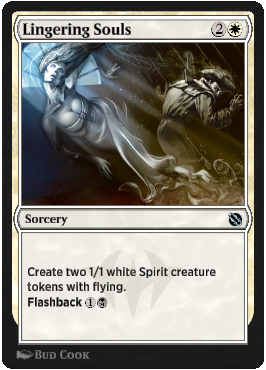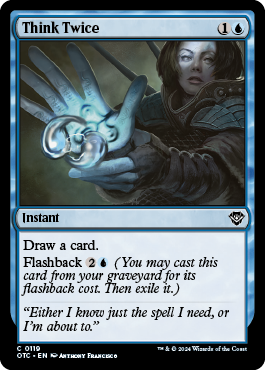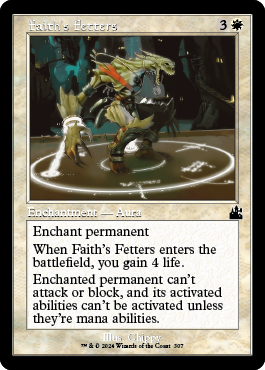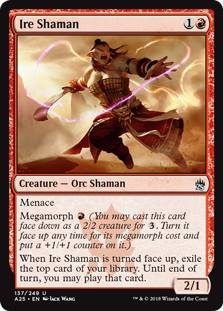Around the start of this year CardKingdom came up with the idea to release a self-contained cube product that you could buy for US$100. It would come pre-sleeved and in a nice couple of cardboard boxes. This would be a great way for people to get started on a cube without the hours and hours of trying to figure out the right configuration of cards to start building your own cube. You can think of it like a pre-packaged board game. $100 is pretty reasonable and the amount of hours of entertainment you can get out of it would be highly worth it. Not to mention the sleeves alone would probably cost $40 alone. There have been a couple of reviews so far: Quiet Speculation reviewed v1 and Tolarian Community College reviewed v3. Both of which have praised the product, and if I was going to review I would be mentioning a lot of the points that they have already made.
What I am trying to do is to give anyone out there who has picked up the cube, or is looking it pick it up, a simple guide to improving the cube. While this is a good product, it is still an outlet for CardKingdom to dump a pile of unused draft chaff into peoples laps. This is where I want to make some suggested cuts and additions to get rid of cards that don’t fit with the themes of the cube, or are just terrible and replace them with things to improve various archetypes or just add a little spice. I will explain why I believe each of these cards should be cut, and offer some suggestions to replace them.
Cut 1: Crook of Condemnation

Does this card even do anything in the cube? Here are all the cards that care about the graveyard in this cube:














Actually, now listing them all out, there is more than I thought there was. There is a total of 14 cards that this card is effective against, but that is already after they have done their thing. Cards like this are meant to be a flexible answer to a deck that may be too strong if all the pieces come together. As you can see, there isn’t really a deck that uses the graveyard and even though this card can cycle, it doesn’t do enough for it to warrant a maindeck spot. Cards that are sideboard only always warrant red flags in draft, as (from my own experience) people don’t care too much for sideboards in friendly cube drafts. This would leave this card to never being played, and if it actually did get played, the drafter must have been really struggling for variables.
Cut 1 Suggested Addition:



While Mimic Vat is a bit hard to parse on first read through it does a lot in the context of this cube. It acts as graveyard hate for creatures (if it is still a thing you think the cube needs to have) but it helps out the populate/creature tokens strategy. This strategy is based in GW but you can bleed it into any colour as they all have creature tokens in this cube, so a colourless reward is nice. It is also quite spicy in the black sacrifice decks.
The other options are to help out some other archetypes in the cube as the clasp helps +1/+1 counter theme, which is also spread across all colours. Mask of Memory was a first pickable card in Mirrodin block draft, and is still a great card today. Gives card filtering to any decks that need it and gives another equipment for the random Valduk and Champion of the Flame strategy.
Cut 2: Memorial to War

The memorial cycle from Dominaria are all here, and they have been great in that draft format… Well, all except one of them. Was it too much to ask for this one to be able to do 2 damage to something ala Blighted Gorge? This card serves no real purpose in this cube and I can’t see it ever wanting to be put into main decks. It is only there to cut off an ambitious splash, but even that is a stretch. The main thing to talk about here is how much do we care about cycles? The only reason this card is in the cube is because it’s brethren are great cards. War is only here because of this fact and none of its own merits.
Cut 2 Suggested Addition:

There isn’t too many mono-red utility lands that could be equivalent to the memorial cycle. The best options are: Flamekin Village, Blighted Gorge, Teetering Peaks and Barbarian Ring. The reason the Encampment was picked over those cards is because it is the closest in power level to the memorial cycle, it helps support what red wants to do (beat down when flooding out) and mimics the memorial by coming in tapped and producing a mana of that colour. Sure, it isn’t a one and done thing like the memorials, but it is pretty similar to the white memorial, just that you have to keep paying mana for the creature. I know it may look awkward to have 4 of a cycle and 1 being different, but some times you need to put functionality over aesthetics.
Cut 3: Resolute Survivors

This makes you think that there may be a RW exert strategy in this cube right? Here are the exert cards you could find while drafting:




Yep, that is right, not a single white creature. I am not sure why either. There are a couple of battalion creatures that could have been Devoted Crop-Mate or even Gust Walker, but they decided not to. Just to have a generic 3/3 for 3 that can drain for 1 if it swings (and not be able to swing next turn) isn’t that exciting. It is also not that great that because it is a false signal. Making someone think they can make great use of the ability of this card and draft a hyper aggressive exert deck and feel a bit sad when they have only gotten 3 exert creatures. Plus one of the other RW cards sort of supports this strategy as well in War Flare. It is a combat trick that untaps all the creatures that just exerted for value. I feel like this one is a little better as RW is a little bit at odds in this cube as it is trying to support two different aggro decks in this cube, go-wide and go-tall. I am keeping the overall analysis of this cube as a future article, so it hard to fix this problem with just 10 changes, but there is a card I think that can help bridge the two.
Cut 3 Suggested Addition:

You see, RW has this random go-tall equipment strategy with these three cards:



While it may be easier to just cull this strategy all together and make RW go with the tokens strategy that is more abundant, it is an interesting angle a drafter could take if they felt so inclined. Weapons Trainer helps bridge the gap between the strategy, by picking up equipment to anthem up your army of tokens, and thus if you already have equipment you would be more inclined to pick up these cards and add them to your deck. While Danitha can hold her own as a decent card and Valduk is competent if not boring without equipment/auras the champion is terrible without. While I believe a future version of this cube should probably cull these cards due to being a trap (exactly what I was calling Resolute Survivors, the card I am trying to cut) Weapons Trainer should hopefully be enough of a strong enough draw to make the cards more playable, while strengthening an already strong archetype.
Cut 4: Invoke the Divine

Enchantment/Artifact hate always has a weird place in cubes. You feel like you need them as you need to be able to remove problematic permanents. It is just a problem that not everyone runs artifacts or enchantments. This cube also doesn’t have too many archetypes that are reliant on these card types that you would feel ok main decking this. There isn’t even anything in this cube that cares about lifegain for you to want that effect either. I mentioned above how I don’t like ‘Sideboard-only’ cards in cubes and this falls under that category.
Cut 4 Suggested Additions:



There are a pile of cards that can replace this by being more flexible. The only problem is, if you make it too flexible, it becomes a different card then what you wanted it to be. This is why I think Forsake the Worldy to be the best choice for this slot. It may not be the flashiest card in the world, but it does the job of being able to deal with an artifact or enchantment, and being main deckable. Cycling is such a great mechanic, as it just makes any niche card convert to a real card if the effect is inapplicable in that game. I also suggested Fetter’s as it has the life buff that Invoke did, to help those controlling white decks stabilise, but it adds in another piece of white creature removal, which I am not sure is needed but only playtesting will tell. I also really like Angelic Purge for some reason, so thought I would suggest it if the other two cards don’t pique your interest.
Cut 5: Willbender

I love Willbender. It has a unique ability that catches everyone offguard and leads to some memorable game states (remember that time I redirected your Door to Nothingness? Good Times…), except in this cube. It isn’t that it doesn’t have anything to redirect, only that it won’t catch anyone offguard, expect for a particular group of players, and they are the ones you don’t want to put at a disadvantage. They are the people who haven’t seen/played your cube before.
Let me explain by showing the other morphs in the cube:


So there are a total of 3 morphs in the cube. None of which share a colour, so when someone plays a facedown card, you have a decent idea as to what card it would be. This is where the detriment of not knowing cube comes in. By all accounts everyone should be able to see a Willbender in play in this cube and then try to play around it. The fact that the other two are proactive spells, where you want to flip them up straight away for value, while willbender is the only reactive one adds to this facade of it being ‘hidden information’. If it was a face up card with the ability to redirect something once, then I wouldn’t have a problem with it. If there were a couple of other blue morphs, then I wouldn’t have a problem with it. As it stands though, I can’t justify the amount of feel bads that this card would produce to include for it’s unique effect.
Cut 5 Suggested Addition:

I mentioned before that each colour has a +1/+1 counter theme. There is also this bird horror that seems out of place in the blue section:

It needs a little bit of help. That is where the plunderer comes in. It can’t spread as many counters at the bird, but it hits a bit harder, and in a cube where there seems to be a theme of 2 1/1’s for 2 mana, taking to the skies seems like a good archetype option. Plus, curving Cloudfin Raptor into the Plunderer sounds like a really quick clock.
Cut 6: Deadly Designs

Have you ever wanted to invest 12 mana to be able to get 2 Murder‘s? Because that is exactly what this card is asking. This card was printed in Conspiracy 2, as it was a multi-player limited format you could use politics to get another player to do some activations for you. This cube was not built for multiplayer, and I don’t think most people who buy it would be looking to play multiplayer with it either. There is enough removal in this cube that drafters don’t need to dig that deep to play this card. Did anyone ever play this in Masters 25? I don’t know why it was reprinted there either. Surely there was a better card to get from that set. Anyway, moving on…
Cut 6 Suggested Additions:



I feel that the black section is pretty solid and I am not sure what it needs. Here are just a couple of suggestions to help buff a couple of the random archetypes. Dread Wanderer give the black based aggro decks another one drop, and allows the sacrifice decks have a recursive creature (at a bit of a cost. Swarm of Bloodflies gives both control and the sacrifice decks a decent sized evasive beater. The only difference is what side the creatures would be dying on to give it the counters. Fallen Ideal was a spicy card I thought of to give the token/sacrifice deck a free sac outlet. It may be a little too swingy, as most people won’t expect you to swing in the air with haste for a possible 10 damage out of nowhere. Probably best left in magical Christmas land, but it didn’t hurt to but the idea in your head 
Cut 7: Goblin Trailblazer

When I decided I would cut a card from each colour there wasn’t anything in red that stood out to me that much. Then I realised in the spoiler that these two cards are right next to each other:


While this kind of card did used to be uncommon and was a good card in it’s own right, I don’t think this cube needs two cards that are practically the same at this point in the curve (even though Ire Shaman will probably never be cast as a 2-mana spell). I mean the card isn’t bad, it is just boring and doesn’t contribute to any archetype in a meaningful way.
Cut 7 Suggested Addition:

All of reds creatures are aggressive. The gold cards for RG want it to be midrange and UR wants to be control. There needs to be something to fit the stop-gap. I was going to have multiple other suggestions, but I have been such an advocate for this card, that I want it to be highly considered for this cube (I am surprised it isn’t in to be honest, as I assume they would have bulk stock of it). It can hold off a decent amount of attacks in the early game and late game it can get you back a piece of removal to help get you back in the game, or just get back a game winning spell (Fight with Fire anyone?). It is the flexibility that makes this card great and gets picked relatively highly in various DOM draft archetypes, so it should have the ability to shine here as well.
Cut 8: Naturalize

Remember how I said that I don’t like non-maindeckable spells. Yeah, well, I probably just should have put this in the same category as Invoke the Divine. But in saying that, I think there is enough artifact hate in green already (there aren’t really that many enchantments in this cube worth removing) with:




All of these are fine as they have other uses (Crushing Vines is pretty narrow, but closer to maindeckable than Naturalize). This is more than what white had, so I am fine with not trying to replace it with any similar effect like I did there. Instead let’s add a card to fix green’s other issue.
Cut 8 Suggested Additions:



Green needs some kind of sifting effect to help reduce variance. CardKingdom added in Krosan Tusker between versions 1 and 3, which is a nice addition, but there needs to be a couple more. These are all nice cheap ways to ensure you either hit the land at the start that you need or hit a creature later on when you have started to flood out. I am quite partial to Grapple the Past, as it can get any creature that has died throughout the game. Can even act as a surprise pump spell for Multani, which is a little too cute to matter, but interactions like this are what make cube games great.
Cut 9: Bloodtallow Candle

Colourless cards are tricky to evaluate. They can go in any deck, so they are usually picked pretty highly. This is even a piece of removal, which also gets picked highly. The real question is how much does this have to cost for someone not to play it? This kind of card is decent enough as filler, and was slightly more useful in DOM drafts as it could trigger historic. The only problem is that this has no secondary purpose in this cube other than a Scour From Existence, and while the difference between 6 and 7 mana in limited is quite a decent step, it doesn’t save this card from it’s inflexibility.
This will most likely be a 12-15th pick everytime and only see play in green/white decks that didn’t pick up any other removal.
Cut 9 Suggested Additions:

It came to me in a dream. This card hits so many different archetypes that it seems like a shoo-in to be included. It hits the equipment theme mentioned before, plus the sacrifice theme. If we want to stretch it even hits the token theme. It is also a piece of mediocre colourless removal that the candle was trying to be, but actually being wanted by a variety of decks. What more could you want from a card?
Cut 10: The Deserts





This is a little bit of a cheat, as there are technically 5 cards here, but I want to bring these cards to people’s attention. While most of the changes between versions 1 and 3 of the cube were fine, the decision to cut the trilands (Arcane Sanctumand friends) was a bit of a blow to the cube. They replaced them with the cycle of memorials (see cut 2) and this cycle of deserts. Good mana fixing and make or break a draft and cutting a whole 10 lands worth of fixing was a bit harsh. The good part was that they also cut the amount of gold cards, meaning that fixing wasn’t as required.
It is just mean to include this cycle of lands as a replacement, as they don’t really do anything in the context of this cube. There are no desert interactions, there is nothing that cares about cycling these away (Like Drake Haven for example). Looking through the list, Multani is the only card where having a cycling land matters. They may claim that they are there to help prevent flood, but if that is the case, why not include Drifting Meadow or Secluded Steppe cycles instead? They are both just strictly better in this case. This is an obvious change for $$$ reasons, as the trilands can sometimes go for $1 a piece, and the deserts are worthless and from a current standard set, so they would have heaps of them lying around.
I am fine for budget cuts, but manabases are what make magic function and we need to right this wrong.
Cut 10 Suggested Additions:





These are probably the best uncommon fixing lands ever printed. They are like a double Aether Hub/Tendo Ice Bridge, allowing for ridiculous splashes and giving you the right mana you need at the right time. These get picked highly and won’t be a mediocre middling pick like the deserts, and actually contribute to making the deck function rather than mitigating mana flood, plus that is what the Memorials were put into the cube for, and they are doing a much better job (well other than Memorial to War, but we dealt with that issue). These isn’t another cycle of 5 lands that help fix mana, as they are usually 10 card cycles, so the vivid’s have found their perfect home.
Conclusion
There are several other cards that are subpar in this list, but the goal of this article wasn’t to give you a hard and fast route to converting the CardKingdom starter cube into a ‘perfect cube’. In essence, there is no such thing as a perfect cube, and even if there is, it won’t exist for long with the amount of cards wizards output each year, there will be some that are better suited to go in more cubes than others. Just know that this product is a great way to get started, and that there is no correct answer as to what cards should replace others. These are just suggestions from years of pouring over cube lists and drafting more cubes than I can count. Just personal opinions that may help edge to a more enjoyable play experience.








